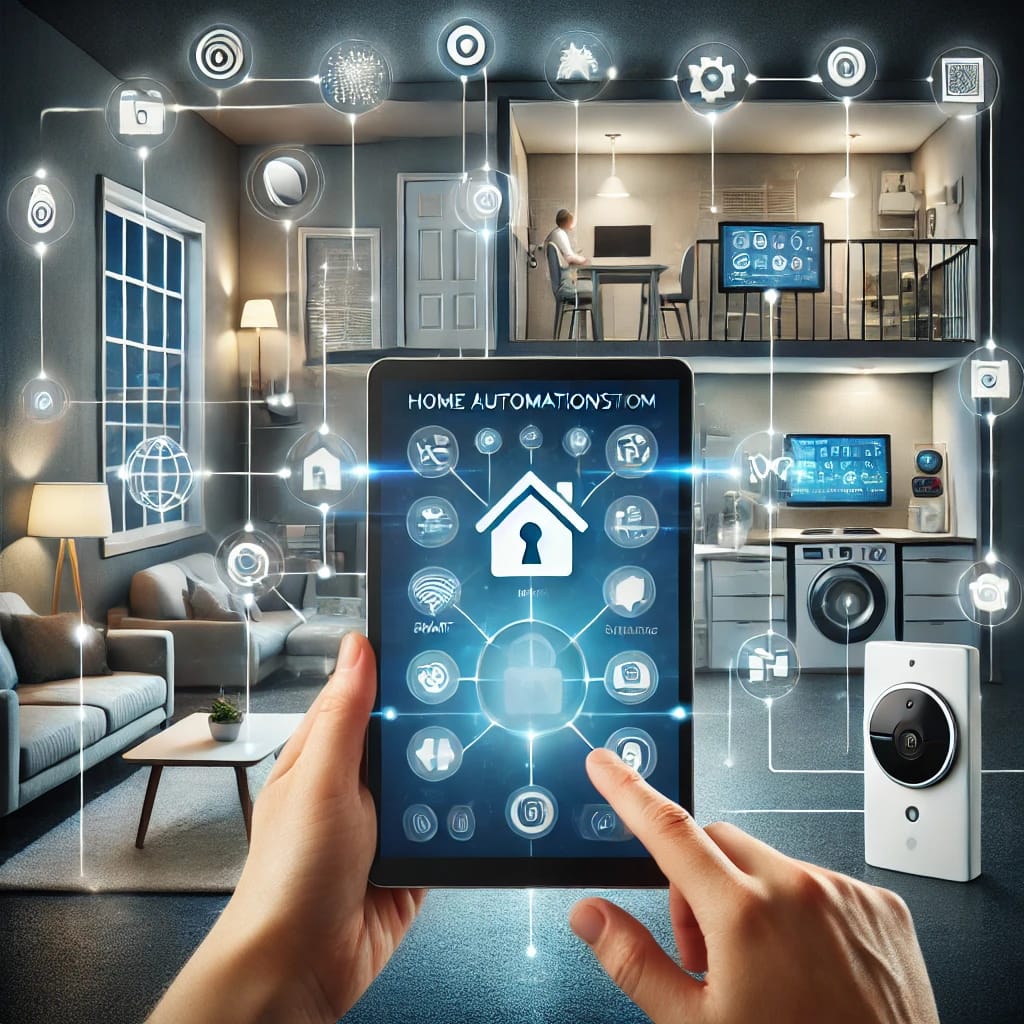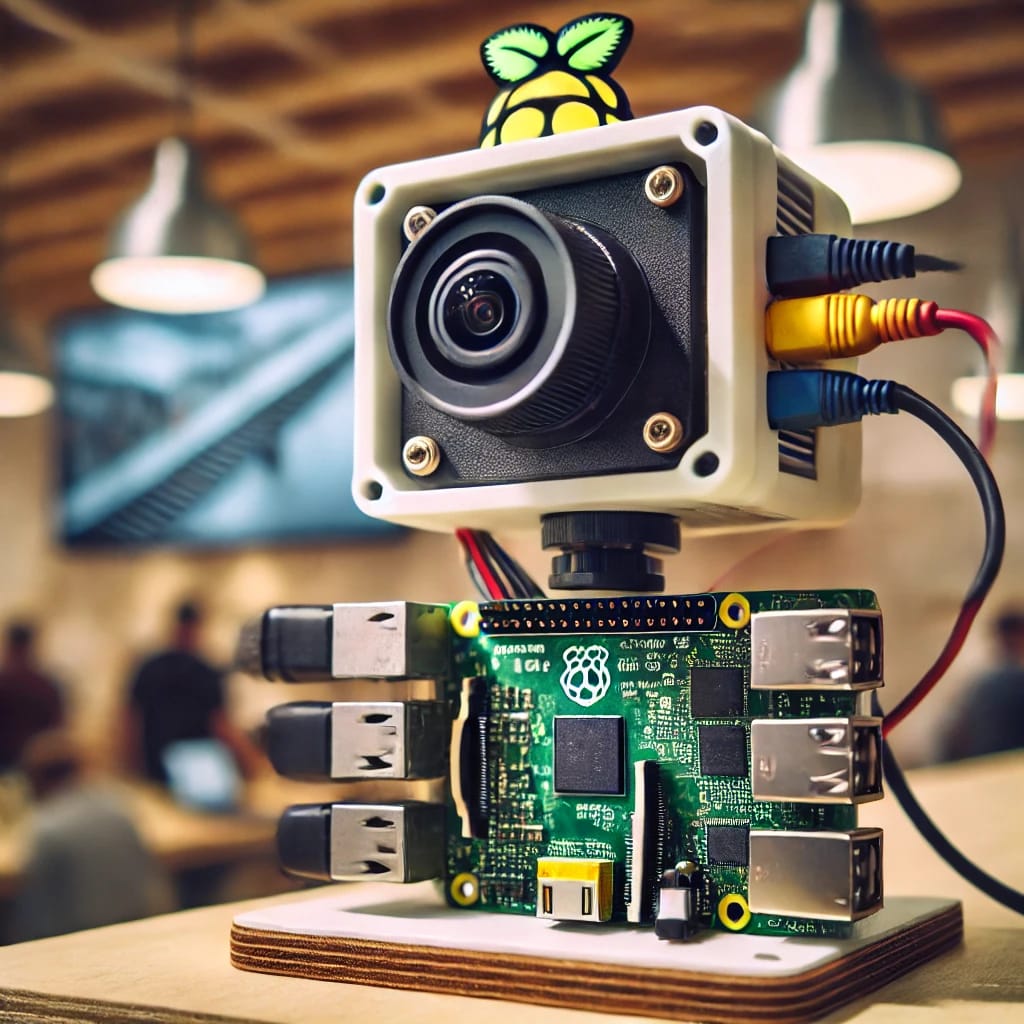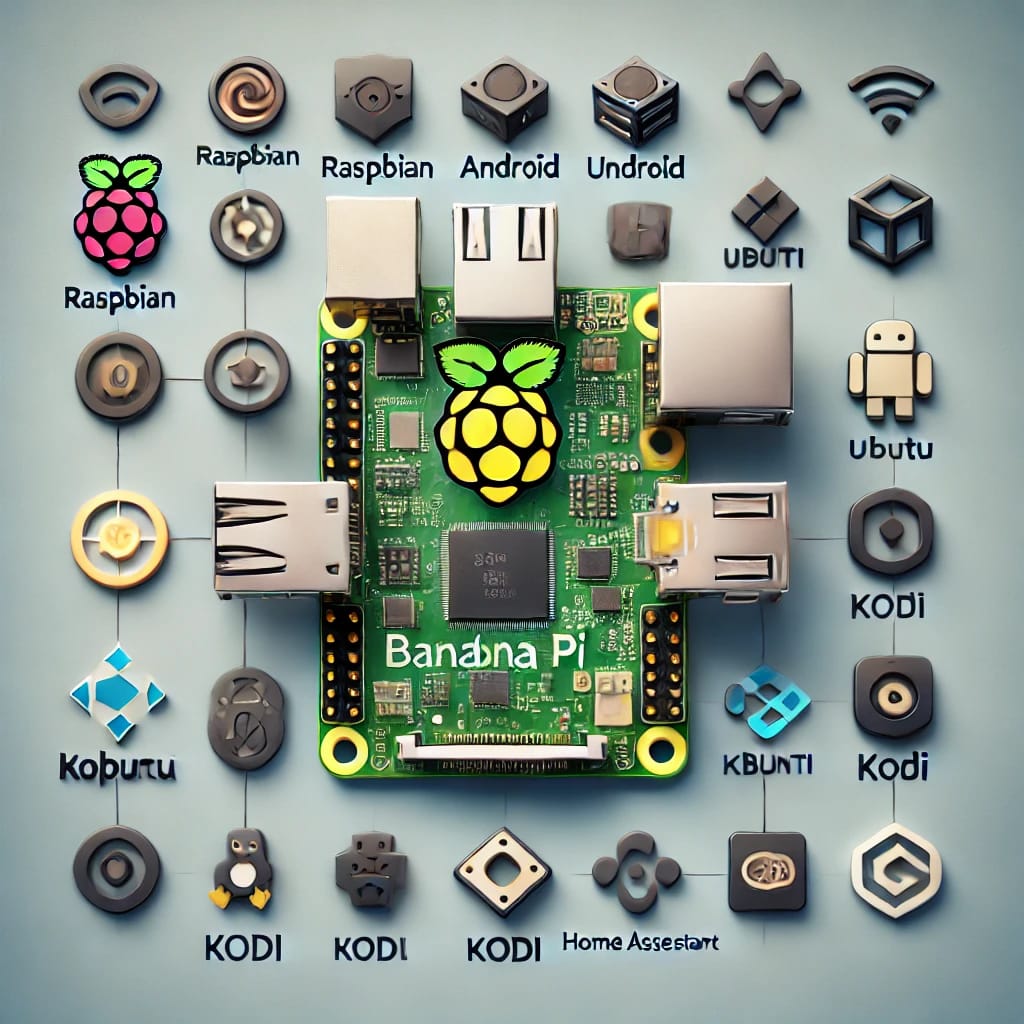Discover how to use Banana Pi for home automation. This step-by-step guide covers everything from setup to integration with smart devices, creating a smart home on a budget.
In recent years, home automation has become more accessible, allowing homeowners to automate everything from lighting and temperature to security and entertainment. With the right hardware and software, transforming your home into a smart home is easier than ever. Banana Pi, a versatile and affordable single-board computer, is an excellent platform for setting up a custom home automation system. In this guide, we’ll show you how to turn your Banana Pi into a smart hub that can control various devices, monitor your home, and integrate with your favorite smart home platforms.
Why Choose Banana Pi for Home Automation?
When considering building your own home automation system, the choice of platform is critical. With so many devices and hubs on the market, it’s easy to feel overwhelmed. However, Banana Pi stands out as an excellent choice for DIY home automation, offering a balance of performance, cost-effectiveness, and flexibility. Below, we dive deeper into why Banana Pi is perfect for building a smart home.
1. Affordable and Cost-Effective Solution
One of the key reasons to choose Banana Pi for home automation is its affordability. Compared to commercial smart home hubs, which can cost anywhere from $100 to $300 or more, Banana Pi offers a budget-friendly alternative with comparable or even superior capabilities. For just $40-$70, you can get a fully functional Banana Pi kit, which includes the board, power supply, and necessary cables. This low cost makes it an excellent choice for those looking to build a smart home on a budget.
Furthermore, the open-source software available for Banana Pi (like Home Assistant and OpenHAB) is completely free to use, meaning you can set up a sophisticated home automation system without having to pay for expensive software licenses or subscriptions. In comparison to proprietary platforms, this cost-effectiveness gives you the flexibility to expand your smart home without worrying about rising costs.
2. Powerful Performance for Seamless Automation
While affordability is crucial, performance is equally important when choosing a platform for home automation. The Banana Pi is powered by a dual-core ARM Cortex-A7 processor that runs at 1.0 GHz, providing a solid foundation for handling multiple tasks simultaneously. When it comes to controlling and automating your home, you need a reliable and responsive hub. The Banana Pi excels in this area by ensuring that tasks like device control, automation, and monitoring run smoothly.
Home automation often involves several devices communicating with each other in real-time. For example, you may have smart lights, thermostats, motion sensors, and security cameras all interacting with the system. The Banana Pi is capable of running all these processes without experiencing lag, ensuring that your smart home remains responsive. Additionally, its processing power allows it to support multi-threading and handle the growing complexity of your automation setups as you add more devices over time.
3. Extensive Connectivity for Smart Devices
Connectivity is at the heart of any home automation system. Banana Pi offers a range of network options that make it highly compatible with various smart devices. It comes with Wi-Fi and Ethernet ports, allowing you to connect it seamlessly to your home network, whether you prefer the stability of a wired connection or the flexibility of wireless networking.
Banana Pi’s USB ports also open up a variety of connectivity options. You can connect additional hardware like Z-Wave, Zigbee, or Bluetooth dongles to control a wider array of smart devices. Many home automation systems rely on protocols like Z-Wave and Zigbee for communication between devices, and the Banana Pi can easily support these with the right adapters. This ensures you can integrate sensors, smart locks, smart lights, and even complex devices like garage door openers into your home automation system.
Moreover, the ability to connect to an existing home network means that Banana Pi can serve as the central hub for devices from various manufacturers, whether they’re Zigbee-based or use Wi-Fi, Bluetooth, or proprietary protocols.
4. Open-Source Flexibility and Customization
Banana Pi’s compatibility with open-source platforms like Home Assistant, OpenHAB, and Domoticz offers unparalleled flexibility and customization options. Unlike proprietary smart home systems that often require users to stay within a specific ecosystem, Banana Pi allows you to build a highly customizable automation setup tailored to your needs. With these open-source platforms, you can:
- Create custom automation scripts: Automate everyday tasks based on specific triggers, such as setting the lights to turn on when you enter a room or adjusting the thermostat when you leave.
- Integrate third-party apps and services: Use platforms like IFTTT or Zapier to connect your smart home system to other services such as weather forecasts, social media, or even email.
- Customize the user interface: With platforms like Home Assistant, you can create personalized dashboards to control and monitor your devices. Whether you want a basic control panel or a more advanced setup, the user interface is fully customizable.
Open-source means that you can take full control of your home automation system, free from the limitations of closed ecosystems. You can integrate devices from multiple manufacturers, design unique automations, and even add new features as they become available.
5. Low Power Consumption for Continuous Operation
Running a home automation system 24/7 can have an impact on your energy consumption. Thankfully, the Banana Pi is designed with energy efficiency in mind. Drawing only around 5V, 2A of power, it consumes significantly less energy than traditional home automation hubs or desktop computers. This makes it perfect for running continuously without significantly impacting your electricity bill.
The low power usage is especially useful for applications where the Banana Pi needs to operate constantly, such as controlling lights, monitoring security cameras, or adjusting the thermostat throughout the day. Given that home automation systems often require around-the-clock monitoring, Banana Pi’s low power consumption ensures that your setup is both cost-effective and eco-friendly.
6. Scalability to Grow with Your Home Automation Needs
As your home automation system grows, you’ll want a platform that can handle increased complexity without slowing down. Banana Pi’s scalability is one of its strongest points. Whether you start with a few smart lights and a thermostat or expand to include an entire network of devices such as motion sensors, security cameras, smart locks, and voice assistants, the Banana Pi can handle the additional load.
Banana Pi also has the flexibility to support future automation needs. You can continuously add devices, integrate new technologies (such as 5G or Wi-Fi 6), or expand into more advanced systems like energy monitoring or home security automation. As new software updates and tools are released, Banana Pi’s open-source ecosystem allows you to stay ahead of the curve and easily scale your home automation setup without needing to replace your hub.
7. Strong Community and Developer Support
An often overlooked advantage of using Banana Pi for home automation is its strong community and support from developers. The Banana Pi forums, along with communities dedicated to open-source platforms like Home Assistant and OpenHAB, provide a wealth of knowledge and troubleshooting advice. Whether you’re just getting started or need help with more advanced configurations, these communities are an invaluable resource for resolving issues and optimizing your home automation setup.
The active developer community also ensures regular software updates, bug fixes, and new feature releases, meaning your Banana Pi home automation system will always stay up to date with the latest advancements in the industry. The availability of resources like tutorials, guides, and example configurations means that even beginners can get up and running quickly without requiring a deep technical background.
8. Security and Privacy Control
Security is one of the most critical concerns when building a smart home. Many commercial smart home platforms collect and store data on the cloud, potentially exposing your private information. By using Banana Pi with open-source platforms, you gain full control over your data and security. You can choose to run your entire system locally, without sending data to third-party servers, ensuring your personal information stays private.
Additionally, because the software is open-source, you can customize your system to meet your own security standards, including setting up firewalls, encrypted connections, and multi-factor authentication. The flexibility of the Banana Pi ensures that you can implement security measures that are specifically tailored to your privacy needs.
9. Multiple Integration Options
Banana Pi supports multiple ways to integrate with various smart home systems and protocols, including but not limited to Zigbee, Z-Wave, Wi-Fi, Bluetooth, and even IR (infrared). This flexibility ensures you’re not tied to one specific type of smart device or hub, allowing you to mix and match devices from different manufacturers to create the optimal home automation system for your needs.
For example, if you have a combination of Wi-Fi-based smart bulbs and Z-Wave-based motion detectors, Banana Pi can manage and automate both types of devices seamlessly. This level of integration makes it easy to adapt your home automation system to any devices you already own or plan to purchase in the future.
Setting Up Banana Pi for Home Automation
Now that you understand why Banana Pi is an ideal choice for home automation, it’s time to get started. Follow these steps to set up your Banana Pi and integrate it with smart home devices.
Step 1: Prepare Your Hardware
Before diving into the software setup, ensure you have all the required hardware for your Banana Pi home automation hub:
- Banana Pi (any model will work, but the Banana Pi M2+ offers better performance)
- MicroSD Card (at least 8GB, 16GB recommended for added space)
- Power Supply (5V, 2A recommended)
- HDMI Cable (to connect to your monitor or TV)
- Keyboard and Mouse (for initial setup)
- Wi-Fi or Ethernet (for network connectivity)
- Smart Home Devices (like smart bulbs, sensors, cameras, etc.)
Step 2: Install an Operating System
For home automation, we recommend using Home Assistant or OpenHAB, as both are open-source platforms designed specifically for smart home control.
- Download the Home Assistant image from the official website or the OpenHAB image for your preferred platform.
- Use Balena Etcher or a similar image writer to flash the image onto your microSD card.
- Insert the microSD card into your Banana Pi, connect it to your display via HDMI, and power it on.
- After the system boots up, follow the on-screen setup instructions to configure Home Assistant or OpenHAB.
Step 3: Connect Smart Devices to Your Network
After setting up the operating system, it’s time to connect your smart home devices to the Banana Pi network. Depending on the devices you have, you may need to:
- Install specific add-ons or integrations in Home Assistant or OpenHAB to connect with smart devices like lights, locks, thermostats, or security cameras.
- Pair Z-Wave or Zigbee controllers to control more advanced smart home gadgets like sensors and motion detectors.
- For Wi-Fi-enabled devices, follow the device-specific instructions to connect them to your home network and integrate them with your home automation platform.
Step 4: Automate Your Home with Scripts and Scenes
One of the key benefits of using Banana Pi for home automation is the ability to create custom automation rules. With platforms like Home Assistant, you can write simple scripts or set up automation triggers based on conditions such as time, motion detection, or temperature changes.
Examples of automations you can create:
- Turn on lights when motion is detected in the living room.
- Set the thermostat to a specific temperature when you leave home.
- Send a notification if a security camera detects movement.
- Automate smart locks to lock doors at a specific time each night.
With Home Assistant or OpenHAB, you can configure these automations directly through their web interfaces, or you can write more advanced rules using YAML (in Home Assistant) or rules DSL (in OpenHAB).
Step 5: Integrate with Voice Assistants
To take your smart home experience a step further, consider integrating Banana Pi with Google Assistant or Amazon Alexa. By linking Home Assistant or OpenHAB with your preferred voice assistant, you can control your entire home automation system with simple voice commands like:
- “Alexa, turn on the living room lights.”
- “Hey Google, set the thermostat to 70°F.”
This integration adds a layer of convenience, allowing you to control your devices hands-free.
Troubleshooting and Advanced Features
While Banana Pi is an excellent platform for home automation, you may encounter some challenges during setup. Here are a few common issues and solutions:
- Device Pairing Issues: If certain devices are not pairing, double-check your network settings or consult the device’s manufacturer for additional troubleshooting steps.
- Automation Delays: Sometimes, automations may be delayed due to network or platform performance issues. Ensure your network connection is stable and that the Banana Pi is not overwhelmed with tasks.
- Integration Problems: If certain devices aren’t integrating properly with Home Assistant or OpenHAB, check the logs for error messages and install any required dependencies or add-ons.
Additionally, for more advanced features, you can set up cloud services like IFTTT or MQTT to create even more complex automations or integrate with third-party devices and services.
FAQs
1. What is the best operating system for home automation on Banana Pi?
The best options are Home Assistant and OpenHAB, as both are specifically designed for home automation and work well with Banana Pi.
2. What smart devices can I control with Banana Pi?
Banana Pi can control a wide range of smart devices, including lights, thermostats, smart locks, security cameras, motion sensors, and more, using integrations in Home Assistant or OpenHAB.
3. Can I use Banana Pi with Alexa or Google Assistant?
Yes, you can integrate Home Assistant or OpenHAB with both Alexa and Google Assistant for voice control of your devices.
4. How do I add smart lights to my Banana Pi home automation system?
You can add smart lights by installing the appropriate integration in Home Assistant or OpenHAB. If your lights use Zigbee or Z-Wave, you’ll need a compatible hub or USB stick.
5. How can I automate the temperature in my home?
You can set automations to adjust your smart thermostat based on factors like time of day, occupancy, or the current temperature in the room.
6. Can I use Banana Pi for security monitoring?
Yes, you can connect IP cameras or motion sensors to Banana Pi and set up automations to monitor your home. Home Assistant supports multiple security camera brands.
7. What is the power consumption of Banana Pi?
Banana Pi consumes around 5V at 2A, which is quite energy-efficient compared to more traditional home automation hubs.
8. How do I integrate sensors (motion, temperature, etc.) with Banana Pi?
Sensors can be integrated via Zigbee or Z-Wave controllers, or through direct Wi-Fi connections, depending on the type of sensor you’re using.
9. Is it possible to create custom automations?
Yes, Banana Pi allows you to create custom automations using the built-in scripting features of Home Assistant or OpenHAB.
10. Can I monitor my home remotely with Banana Pi?
Yes, both Home Assistant and OpenHAB support remote access via a mobile app or web interface, so you can monitor and control your devices from anywhere.
11. How many devices can Banana Pi support?
The number of devices Banana Pi can support depends on the model and the complexity of your automation setup. Typically, it can handle dozens of devices without performance issues.
12. Do I need programming knowledge to set up Banana Pi for home automation?
Basic programming knowledge is helpful, but most home automation setups can be done using the web interfaces provided by Home Assistant or OpenHAB, with minimal coding required.
13. Can I use Banana Pi for automating other tasks beyond home automation?
Yes, Banana Pi is versatile and can be used for many other tasks like media centers, file servers, and IoT projects.
14. What should I do if I encounter issues during setup?
Check the logs in Home Assistant or OpenHAB for error messages, refer to the community forums for troubleshooting, or consult the platform’s documentation.
15. Is Banana Pi secure for home automation?
Banana Pi is as secure as any other IoT device, but it’s important to regularly update the software and use strong passwords to ensure the security of your home automation system.
Transforming your home into a smart, automated environment with Banana Pi is an exciting and affordable project. With the right tools, smart devices, and platforms like Home Assistant or OpenHAB, you can create a highly functional and customizable home automation system that suits your lifestyle. Whether you want to automate lighting, temperature, security, or integrate with voice assistants, Banana Pi provides an excellent base for building the smart home of your dreams. Enjoy the process and the convenience of your new, intelligent living space!






